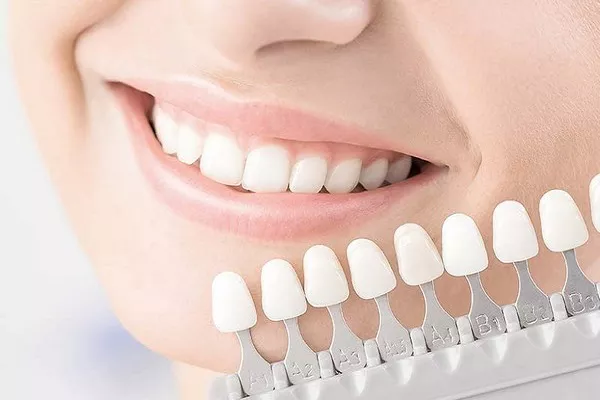A radiant and confident smile can leave a lasting impression on others. However, yellow teeth can significantly impact self-esteem and confidence, leading to discomfort in social situations. While teeth discoloration is a common concern, it is not something you have to live with permanently. In this article, we will explore the causes of yellow teeth and provide practical tips on how to get rid of them, ensuring a bright and healthy smile.
Understanding the Causes of Yellow Teeth
Before delving into the remedies, it is essential to understand the factors that contribute to yellow teeth:
Poor Dental Hygiene: Inadequate brushing and flossing can lead to the accumulation of plaque and tartar, causing teeth to appear yellow.
Food and Beverages: Consuming staining foods and beverages such as coffee, tea, red wine, and dark-colored fruits can leave stubborn stains on teeth over time.
Smoking and Tobacco Use: Nicotine and tar in tobacco products can lead to severe teeth discoloration.
Aging: As we age, the outer layer of enamel on our teeth wears down, revealing the yellowish dentin underneath.
Medications: Certain medications, such as antihistamines and antipsychotics, can cause teeth discoloration as a side effect.
Effective Ways to Eliminate Yellow Teeth
Maintain Proper Dental Hygiene
The foundation of a bright smile starts with good oral hygiene practices:
a. Brushing: Brush your teeth at least twice daily using fluoride toothpaste and a soft-bristled toothbrush. Pay attention to each tooth‘s surface, ensuring a thorough clean.
b. Flossing: Regular flossing removes plaque and debris from between teeth, reducing the risk of yellowing.
c. Mouthwash: Using an alcohol-free mouthwash can help eliminate bacteria and freshen breath, promoting a healthy mouth.
Limit Staining Foods and Beverages
While it may be challenging to completely eliminate staining foods and beverages from your diet, moderating their consumption can make a significant difference:
a. Use a Straw: When drinking beverages like coffee, tea, or soda, use a straw to minimize contact with your teeth.
b. Rinse Your Mouth: After consuming staining foods, rinse your mouth with water to wash away any lingering pigments.
c. Chew Sugarless Gum: Chewing sugarless gum after meals stimulates saliva flow, which can help wash away food particles and neutralize acids.
Quit Smoking and Tobacco Products
In addition to its detrimental effects on overall health, smoking and tobacco use can severely stain teeth. Quitting or reducing tobacco consumption can lead to significant improvements in teeth color and overall oral health.
Teeth Whitening
Professional teeth whitening procedures conducted by dentists can yield dramatic results. There are two primary options:
a. In-Office Whitening: Dentists use potent bleaching agents along with specialized equipment to whiten teeth within a single appointment.
b. At-Home Whitening: Dentists can provide custom-fitted trays and milder bleaching agents for at-home use. This method may take longer, but it is a more affordable option for many.
Natural Remedies
Several natural remedies may help brighten teeth, but their effectiveness can vary among individuals:
a. Baking Soda: Brushing with a paste made from baking soda and water can gently remove surface stains.
b. Hydrogen Peroxide: Gargling with a diluted hydrogen peroxide solution can help whiten teeth, but it should be used sparingly and with caution.
c. Oil Pulling: Swishing coconut or sesame oil in your mouth for a few minutes daily can purportedly reduce bacteria and improve oral health.
Consider Dental Veneers
Dental veneers are thin, custom-made shells crafted from porcelain or composite resin that are designed to cover the front surface of teeth. They offer an effective and versatile solution for addressing a variety of dental imperfections, including discoloration, chipping, gaps, and misalignment. Veneers are a popular choice among individuals looking to enhance their smile and achieve a natural, radiant appearance.
The Veneer Placement Process
Consultation and Examination:The first step in getting dental veneers is to schedule a consultation with a qualified dentist. During this appointment, the dentist will evaluate your oral health, discuss your concerns, and determine if you are a suitable candidate for veneers. They will also explain the veneer procedure and address any questions you may have.
Treatment Planning:Once you decide to proceed with veneers, the dentist will create a personalized treatment plan tailored to your specific needs. This plan will include considerations for the number of veneers required, the shade of veneers that best matches your natural teeth, and other factors essential for achieving your desired results.
Tooth Preparation:To prepare your teeth for veneers, the dentist will remove a small amount of enamel from the front surface of the teeth. This step ensures that the veneers will adhere properly and creates space for the veneer’s thickness. While the amount of enamel removed is minimal, it is an irreversible process.
Impressions and Temporary Veneers:After tooth preparation, the dentist will take impressions of your teeth. These impressions will serve as a model for creating the custom veneers in a dental laboratory. In the meantime, the dentist may place temporary veneers to protect your prepared teeth and maintain aesthetics.
Custom Veneer Fabrication:Using the impressions, skilled dental technicians will fabricate the custom veneers to match the shape, size, and color discussed during the treatment planning stage. The dental laboratory’s expertise is crucial in ensuring that the veneers blend seamlessly with your natural teeth.
Veneer Bonding:During the final appointment, the dentist will check the fit and appearance of the custom veneers. If necessary, they may make adjustments to achieve a perfect fit. Once both you and the dentist are satisfied with the veneers’ appearance, they will be permanently bonded to your teeth using a strong dental adhesive.
Benefits of Dental Veneers
Enhanced Aesthetics: Dental veneers can dramatically improve the appearance of your smile by concealing various imperfections, such as stains, discoloration, and chips.
Natural Appearance: High-quality porcelain veneers are designed to replicate the light-reflecting properties of natural teeth, providing a lifelike and beautiful smile.
Versatility: Veneers can address multiple cosmetic issues simultaneously, making them a versatile solution for a wide range of dental concerns.
Stain Resistance: Porcelain veneers are highly resistant to stains, allowing you to enjoy your favorite foods and beverages without worrying about discoloration.
Minimal Tooth Alteration: Compared to other dental procedures, veneer placement requires minimal tooth alteration, preserving more of your natural tooth structure.
Durable and Long-lasting: With proper care, dental veneers can last for many years, providing a durable and reliable solution for achieving a radiant smile.
Caring for Dental Veneers
Maintaining proper oral hygiene is crucial to ensure the longevity and beauty of your dental veneers. Here are some essential care tips:
Brush and Floss Regularly: Continue to brush your teeth twice a day and floss once daily to keep your veneers and natural teeth clean and free of plaque buildup.
Avoid Excessive Force: While veneers are strong, they can be damaged by excessive force, such as biting on hard objects or using teeth as tools.
Wear a Mouthguard: If you participate in contact sports or grind your teeth at night, wear a custom mouthguard to protect your veneers.
Regular Dental Check-ups: Visit your dentist for regular check-ups and cleanings to ensure the health of your veneers and overall oral health.
Conclusion
Yellow teeth may be a common problem, but it is one that can be addressed with the right approach. By adopting proper dental hygiene practices, limiting staining foods and beverages, quitting smoking, and exploring professional teeth whitening options or dental veneers, you can achieve a dazzling and confident smile. Remember to consult with your dentist to determine the most suitable treatment plan for your specific needs. With patience and commitment, you can bid farewell to yellow teeth and embrace a brighter, healthier smile.
Relate Topics:



























